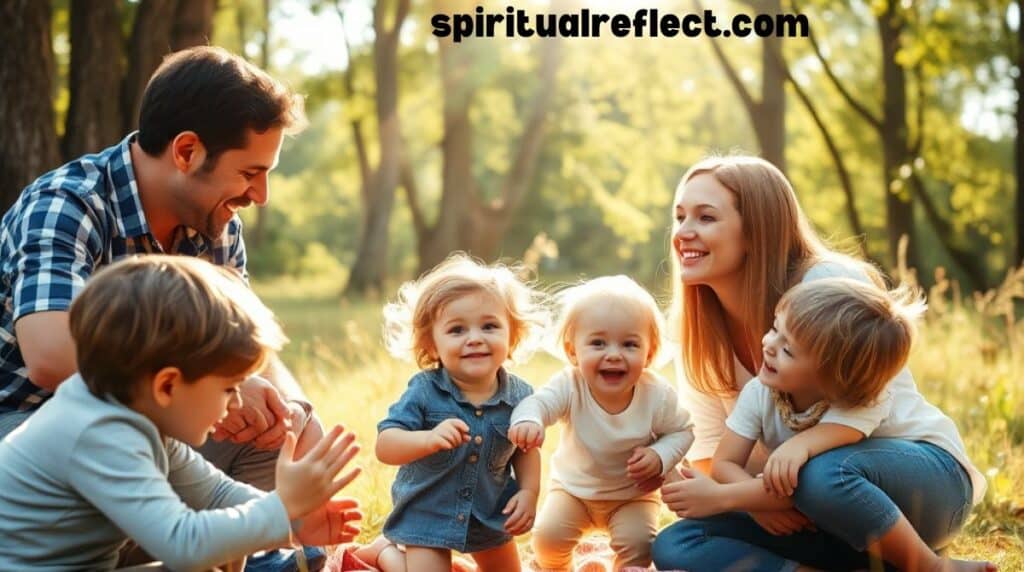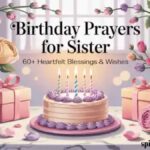Family is a group of individuals connected by blood, marriage, or a deep emotional bond, offering a foundation of support, love, and shared identity. It extends beyond biological ties to include those we choose to stand by us through life’s highs and lows. At its core, family provides the emotional safety and unity that every human instinctively seeks, forming the heart of personal growth and belonging.
In every corner of the world, family shapes our values, traditions, and sense of self. It’s the first place we learn love, trust, and resilience. Whether it’s laughter over shared meals, support during hardships, or memories built during celebrations, the essence of family carries a warmth no other connection can replicate. This deeply human experience continues to inspire cultures, stories, and symbols across generations.
Family is not limited by walls or last names—it grows through loyalty, care, and shared purpose. In a rapidly changing world, the timeless value of family offers a sense of grounding and meaning that endures.
What Makes a Family Symbol?
Symbols tied to family often share key themes:
- Unity and connection
- Heritage and ancestral lineage
- Protection and devotion
- Fertility and a safe home
- Honor, respect, and spiritual guardianship
Whether woven into clothing, carved in wood, or used in rituals, these designs offer symbolic protection and reflect family values.
15 Family Symbols by Culture
Celtic: The Trinity Knot & Family Knot

The iconic trinity knot—also known as the Triquetra—features three continuous loops. It conveys unity, representing the past, present, and future. Used for centuries in stone carvings and jewelry, it symbolizes an emotional connection that spans generations.
Fun fact: The Book of Kells (800 AD) displays some of the earliest intricate designs.
Chinese: The Character ‘家’ (Jia)
Under a roof, a pig—this ancient pictograph forms the character 家, meaning home or family. Beyond its literal meaning, Jia embodies affection, protection, and household identity. You’ll often see it in calligraphy hung at the New Year for good fortune.
Japanese: Mon—Family Crests
Unlike modern logos, Mon represents lineage and honor. These stylized emblems—plants, animals, geometrical shapes—are passed down through generations, featured on kimonos and tombstones.
Examples of symbolic plant motifs:
| Motif | Meaning |
|---|---|
| Cherry blossom | Ephemeral beauty, marital love |
| Pine needles | Longevity, family unity |
These artistic devices encapsulate honor and respect for one’s ancestors.
Viking Culture: Valknut & Yggdrasil
The Valknut, three interlocked triangles, appears on burial stones. Warriors wore it for valor and family legacy. Meanwhile, Yggdrasil, the world tree, connected the earthly and spiritual realms and symbolized generational continuity.
Aztec: The Calli Symbol
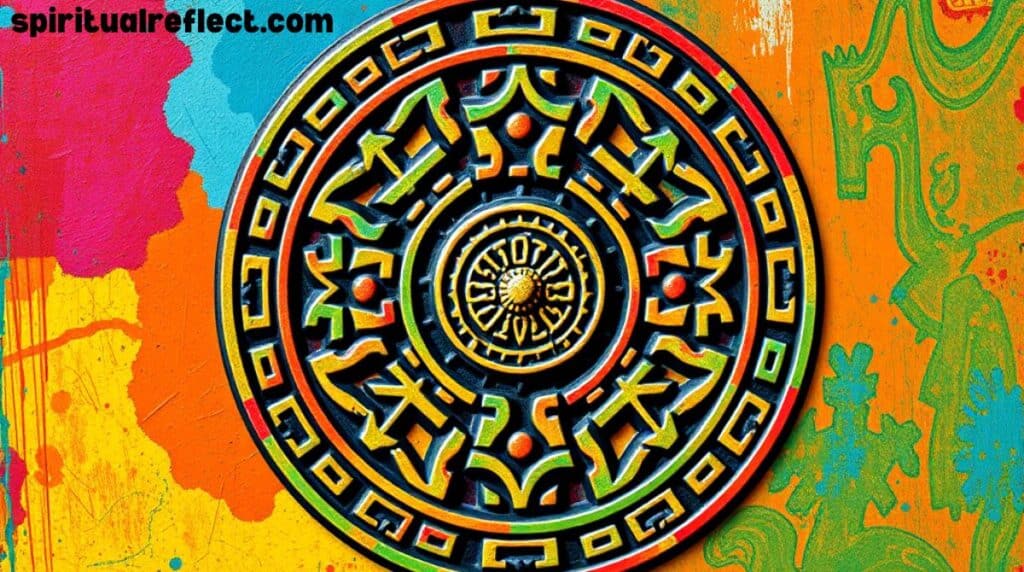
In Nahuatl, calli means “house”. This simple house glyph stands for extended family and clan structure. Teotihuacan’s codices and walls of temples feature this glyph to honor ancestors and sacred kin.
African (Akan): Adinkra Symbols – Eban & Nkyinkyim
The Eban sign (a fence) means safety, protection, and seasoned bonds. The Nkyinkyim, a twisting symbol, represents adaptability and the emotional connection within chosen family.
Found on pottery, cloth, and ceremonial items, these emblems display communal strength and wisdom.
Egyptian: Ankh & Scarab Beetle
The Ankh, a cross with a loop, symbolizes life and fertility, and unity. Often worn as amulets, it symbolizes spiritual guardianship for families. The scarab—a sacred beetle—represents rebirth and household safety.
Often buried with royals, it reinforced beliefs in afterlife devotion.
Greek: Olive Tree & Labrys
The olive tree is a universal emblem of peace, fertility, and generational continuity—crucial values for Greek family values. The labrys, a double-headed axe, hints at shared paternal-maternal authority that binds the family together.
Slavic: Rod & Rozhanitsy
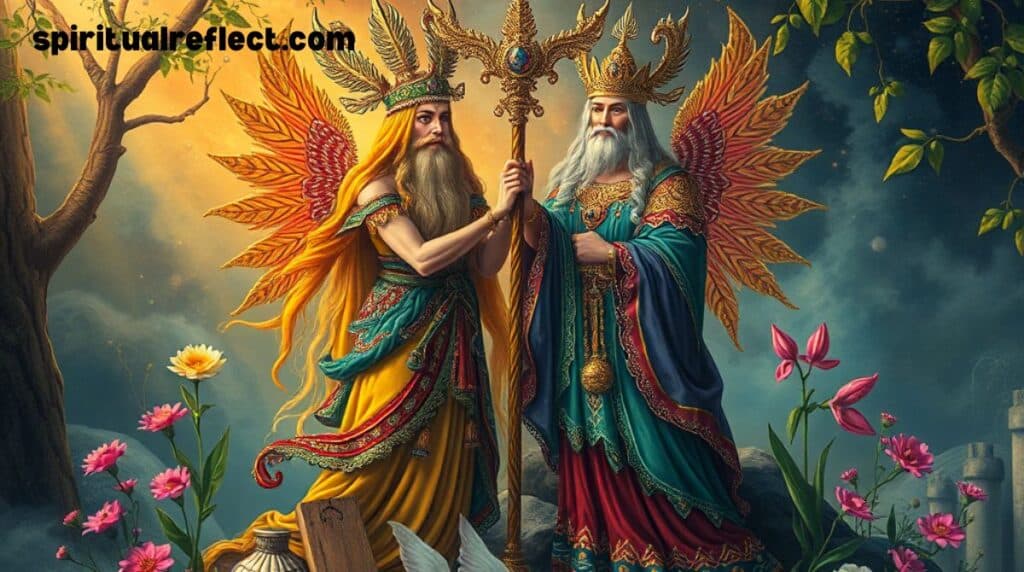
In Slavic mythology, Rod is the progenitor god of kinship. His counterparts, the Rozhanitsy, protected women and newborns—symbols of fertility and unity.
Countless folk arts and storytelling honor these figures and their powerful influence on bond and birth.
Roman: Lares & Penates
Romans worshipped Lares and Penates—household gods that embodied domestic safety, prosperity, and dutiful devotion. They watched over meals and hearths, a daily ritual central to home life.
Polynesian: The Turtle (Honu)
Turtles represent long life and family connections in Polynesian cultures. Their patterned shells appear in tattoos—symbols of wisdom, connection, and ancestral guidance.
Indian: Banyan Tree & Lotus
The Banyan is living architecture—with aerial roots, it symbolizes generational continuity, providing shade and shelter. The lotus, revered for purity, also reflects renewal and maternal lineage in religious ceremonies.
Native American: Circle & Eagle Feather
The circle appears in hoop dances, medicine wheels, and visionary visions. It’s a symbol of unity and cyclical connection. The eagle feather, a sacred item, embodies strength, honor, and passage, passed through generations to mark rites and escort belongings.
Māori: Koru (Fern Spiral)
On stone and wood carvings—or in body art—the Koru, or fern spiral, embodies new life and growth. It conveys family roots and transformation. Designs often appear on heirlooms and family treasures that speak of regeneration.
Sami (Nordic): Beaivi (Sun Symbol)
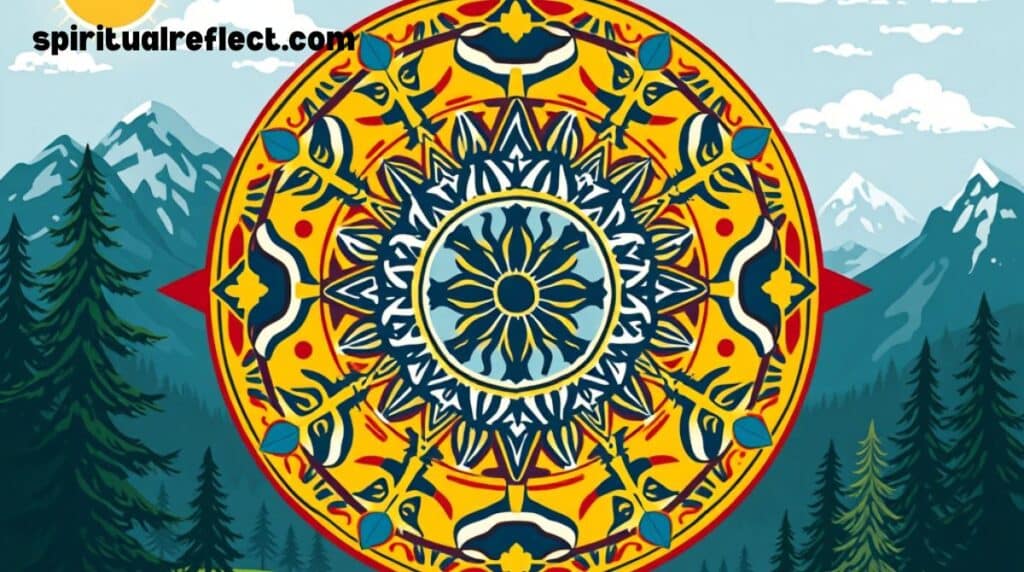
The Sami regard the sun as Beaivi, the deity of fertility and well-being. Crafts feature stylized solar symbols that manifest seasonal cycles, sustenance, and family nourishment (both spiritual and physical).
Why These Symbols Matter Today
These diverse traditions resonate with us because they break down boundaries, reviving cultural heritage and passing values to future generations. Through tattoos, wall art, baby gifts, and family logos, they reconnect extended networks.
You might pick a koru from Māori tradition to honor family roots or wear a Viking rune to express ancestral resilience. Such imagery becomes more than decoration—it’s ceremonial significance tied to identity and belonging.
Case Study: Adinkra in the African Diaspora
Many descendants of enslaved Africans in the Americas reconnect with their ancestral heritage via Adinkra symbols.
Highlights:
- Eban featured in weddings, symbolizing protection and commitment.
- Alders, churches, and designers integrate Nkyinkyim to reflect cultural pride and evolving family bonds.
“My wedding ring, bearing Eban, reminded me that we vowed not just love—but also protection,” says Kayla Thompson, an African-American bride.
This grounded cultural tradition bridges time and belongs to personal history.
Quick Reference Table
| Culture | Symbol(s) | Family Significance |
|---|---|---|
| Celtic | Trinity Knot | Eternal unity, heritage |
| Chinese | 家 (Jia) | Home, belonging, household identity |
| Japanese | Mon | Lineage, honor, family legacy |
| Viking | Valknut, Yggdrasil | Ancestral valor, cosmic connection |
| Aztec | Calli | Extended family, clan identity |
| African (Akan) | Eban, Nkyinkyim | Safety, adaptability, kinship |
| Egyptian | Ankh, Scarab | Spiritual guardianship, rebirth |
| Greek | Olive Tree, Labrys | Peace, fertility, dual generational roles |
| Slavic | Rod, Rozhanitsy | Birth, familial loyalty, destiny |
| Roman | Lares, Penates | Daily protection, domestic devotion |
| Polynesian | Turtle (Honu) | Long life, emotional connection, wisdom |
| Indian | Banyan, Lotus | Shelter, purity, generational rituals |
| Native American | Circle, Eagle Feather | Unity, tribal connection, honor |
| Māori | Koru | New life, growth, deep roots |
| Sami (Nordic) | Beaivi (Sun) | Shelter, purity, and generational rituals |
How to Choose a Family Symbol That Resonates
- Reflect on values: love, protection, unity, legacy?
- Research authenticity—avoid cultural appropriation.
- Decide: ancestral or personally chosen family roots?
- Where to find: museums, heritage groups, and cultural advisors.
- Use symbols thoughtfully in weddings, gifts, and home décor.
Visual Inspiration & Takeaways
- Infographic Idea:
A flowchart: “What’s your family symbol?” → Choose between themes like longevity, unity, protection → Connect to Celtic, Egyptian, Māori, Native American symbols. - Quote:
“Symbols are living memory; each pattern holds a story waiting to be told.” — Cultural historian
Final Thoughts
Family is one of the most important parts of life. It gives us love, support, and strength. Whether we are happy or sad, family is always there to stand with us. A truth makes us feel safe and cared for. It is where we learn kindness, respect, and the meaning of togetherness.
Family is not just about being related by blood. It is about the people who stay with us, help us, and love us unconditionally. In every culture, it holds a special place and brings a deep sense of belonging. No matter where we go in life, family is the bond that keeps our hearts connected.

Rana Ahmad is the creator of Spiritual Reflect, where she shares insights on personal growth, mindfulness, and meaningful living to inspire a more intentional life.

